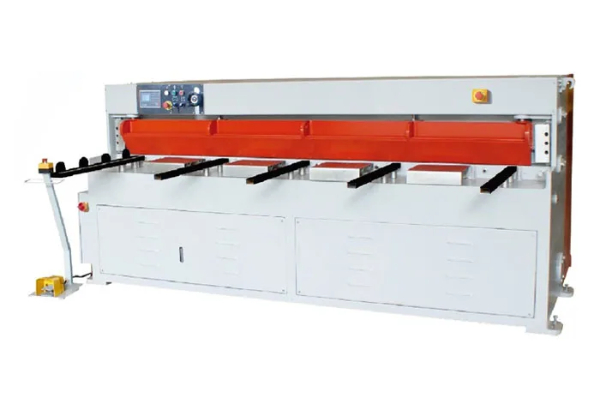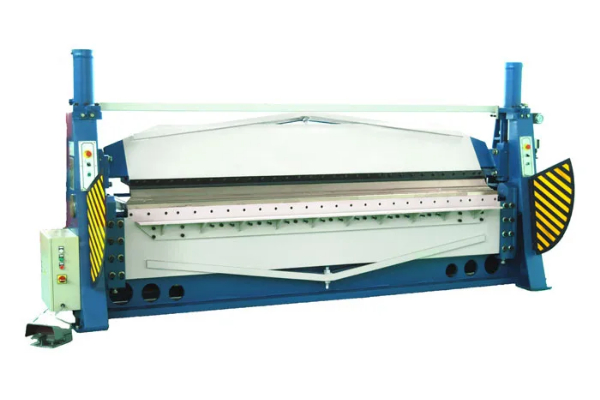
How to Maintain and Troubleshoot Your Press Metal Machine
- By:Metmac
- 2024-08-14
- 87
Press metal machines are essential pieces of equipment in many manufacturing industries. They are used to shape and form metal into various components. To ensure that your press metal machine operates efficiently and safely, it is important to perform regular maintenance and troubleshooting. This article provides a comprehensive guide on how to maintain and troubleshoot your press metal machine, helping you keep it in optimal condition for years to come.
Daily Maintenance
Daily maintenance tasks help prevent minor issues from escalating into major problems. These tasks include:
Lubrication:
Lubricate all moving parts of the machine, following the manufacturer’s recommendations for the type and frequency of lubrication.
Cleaning:
Remove debris and dust from the machine using compressed air or a soft brush. Pay attention to areas where metal chips and scrap accumulate.
Inspection:
Visually inspect the machine for any signs of wear, damage, or leaks. Check for loose bolts, cracks, and unusual noises.
Regular Maintenance
Regular maintenance, typically performed weekly or monthly, delves deeper into the machine’s components:
Hydraulic System:
Inspect the hydraulic system for leaks, contamination, and proper fluid levels. Change the hydraulic fluid and filters according to the manufacturer’s schedule.
Electrical System:
Check the electrical wiring, connections, and contacts for damage or loose connections. Ensure that the electrical cabinet is clean and free of debris.
Mechanical Components:
Inspect all mechanical components, including gears, bearings, and shafts. Look for signs of wear, misalignment, and excessive vibration.
Troubleshooting Common Issues
Despite regular maintenance, press metal machines may occasionally experience issues. Here are some common problems and their solutions:
Machine not starting:
Check the power supply, electrical connections, and hydraulic fluid levels. Reset the machine’s safety switches if necessary.
Excessive noise or vibration:
Check for loose parts, worn bearings, or misaligned components. Tighten bolts, replace bearings, or adjust alignments as needed.
Metal not forming properly:
Check the die settings, lubrication, and workpiece placement. Adjust the settings or apply additional lubrication as necessary.
Advanced Troubleshooting
If you cannot resolve the issue with the basic troubleshooting steps, you may need to contact a qualified technician for advanced troubleshooting. They can diagnose and repair more complex problems, such as:
Hydraulic system failure:
Replace faulty hydraulic components, such as pumps, valves, or cylinders. Flush the system to remove contaminants.
Electrical system malfunction:
Repair or replace damaged electrical wiring, connections, or components. Reset the machine’s control system and check for software updates.
Mechanical failure:
Replace worn gears, bearings, or shafts. Realign components and check for any damage caused by the failure.
By following the maintenance and troubleshooting tips outlined in this article, you can keep your press metal machine operating efficiently and safely. Regular maintenance and prompt troubleshooting help prevent downtime, extend the machine’s lifespan, and ensure the highest quality of your manufactured products.
-
Reliable Sheet Metal Equipment for Sale to Support Precision Fabrication
2025/07/17 -
Advanced Duct Machine AC and Fabrication Solutions from Metmac
2025/07/12 -
The Advantages of Using a Sheet Roll Forming Machine in Manufacturing
2024/09/14 -
How to Optimize Your Laser Sheet Cutting Machine for Maximum Performance
2024/09/12
-
Efficient Sheet Metal Laser Cutting and Press Brake Solutions
2025/08/20 -
Advanced Sheet Metal Roll Forming Machines and Laser Cutting Solutions
2025/08/20 -
High-Performance Sheet Forming Machines for Industrial Applications
2025/08/20 -
Precision Steel Sheet Cutting and Bending Machines for Modern Metalworking
2025/08/14
-
A Guide to the Latest Innovations in Sheet Metal Folding Machines
2024/11/29 -
Key Features to Consider When Investing in a Sheet Metal Folding Machine
2024/11/28 -
Enhancing Precision with Advanced Sheet Metal Folding Machines
2024/11/27 -
How to Choose the Right Sheet Metal Folding Machine for Your Workshop
2024/11/26



